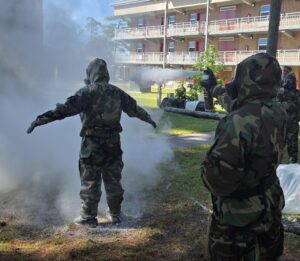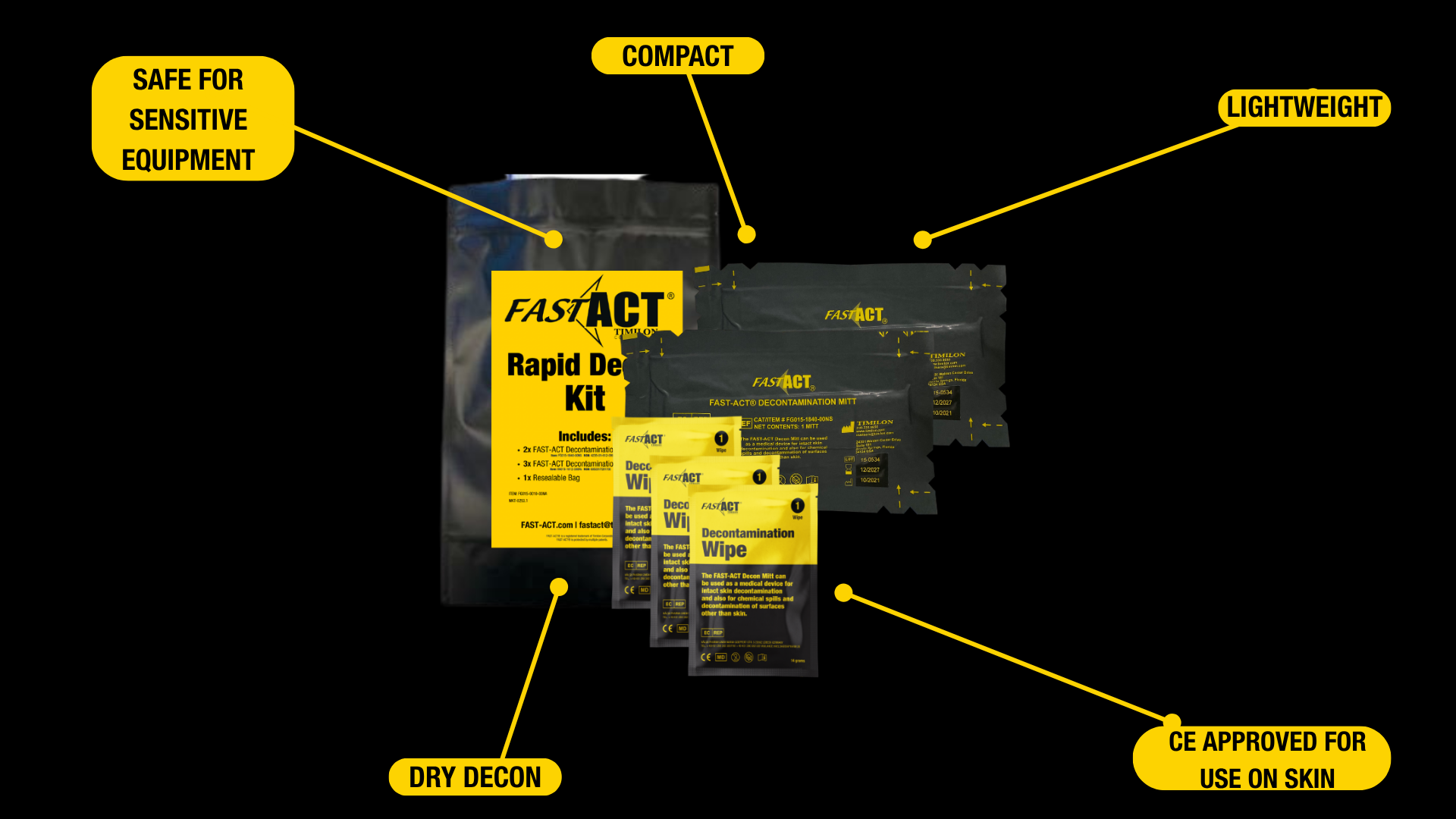The Shift Toward Dry Decontamination: Funding, Adoption, and the Future of CBRN Preparedness
Chemical, biological, radiological, and nuclear (CBRN) threats demand fast, effective, and adaptable solutions. Across the globe, there is a clear movement toward dry decontamination technologies as organizations look for ways to improve readiness while reducing logistical and environmental burdens.
This transition is not limited to one group. First responders, fire and HAZMAT teams, CBRN teams, military units, and civil protection agencies all face scenarios where traditional wet decontamination methods fall short. In this blog, we’ll examine why dry decontamination is gaining momentum, highlight Europe’s leadership and funding efforts, and explore how global organizations—including FAST-ACT—are adopting these solutions to strengthen preparedness for CBRN threats. standard.
Why Dry Decontamination?
Wet decontamination systems have served as the foundation of CBRN response for decades and remain critical in certain scenarios—especially when large-scale washing or full-surface decontamination is required. However, they come with limitations. Wet systems demand significant infrastructure, large volumes of water, and can generate challenges such as contaminated runoff or radioactive wastewater.
Dry decontamination does not replace wet systems but complements them. For many incidents, Waterless Personnel Decontamination and Rapid Decontamination solutions provide faster, more adaptable options:
By comparison, Waterless Personnel Decontamination and Rapid Decontamination solutions offer:
- Speed and efficiency: Rapid application and neutralization of liquid contaminants, chemical spill hazards, or aerosolized chemical threats.
- Flexibility: Usable in field, urban, and austere environments without infrastructure.
- Safety: Reduced cross-contamination, protecting both responders and the public during hazmat incidents or radiological emergencies.
- Sustainability: Minimal environmental impact compared to wet decon.
By combining wet and dry capabilities, teams strengthen their overall preparedness—ensuring the right tool is available for every type of response. These advantages make dry decon valuable across sectors, from battlefield operations to public health emergencies.
To learn more about wet vs. dry decon, read here.

Europe’s Move to Dry Decon
Recent developments show that Europe is accelerating the adoption of dry decontamination as part of its broader crisis response strategy. This shift reflects a growing recognition that Rapid Decontamination and Waterless Personnel Decontamination methods provide faster, safer, and more sustainable solutions for managing CBRNe incidents.
The European Commission has played a central role in this transition by funding initiatives and supporting the development of EU dry decontamination guidelines under the RescEU program. This includes significant investment in CBRNe equipment, training, and infrastructure designed to strengthen both Military and Civil CBRNe capabilities.
FAST-ACT continues to improve coordination across borders, ensuring that civil protection teams, Emergency Services, and CBRN teams can respond more effectively to challenges ranging from chemical spills to unknown vapor threats.
Funding Support: RescEU and Civil Protection Investment
The RESCEU project is a critical enabler of this shift. With funding announced for 2025/2026, member states now have substantial backing to invest in:
- Advanced CBRNe equipment for civil protection teams
- Rapid Decon Kits and scalable field solutions
- Infrastructure upgrades to support Military and Civil CBRNe capabilities
This investment strengthens readiness for scenarios ranging from liquid contaminants to radiological emergencies, while providing a model for other regions evaluating similar funding mechanisms.
A Global Trend in CBRN Preparedness
The move toward dry decon is not confined to Europe. Around the world, Emergency Services, National Police, fire departments, and Civil Defense units are rethinking response strategies considering evolving threats and new funding opportunities.
Adoption is accelerating because dry decontamination offers operational benefits across diverse missions:
- Military: Provide lightweight, field-ready options that integrate seamlessly into multinational training and deployment,
- Fire and Hazmat: Rapid neutralization during chemical spills, vapor threats or unknown hazards.
- Civil Protection and CBRN Teams: Deployable solutions for mass-casualty and CBRNe incidents.
- Emergency Services and National Police: Immediate, fast protection for personnel and the public in urban response settings.
FAST-ACT’s Role in Supporting Adoption
FAST-ACT has built its expertise around advanced chemical dry decontamination solutions that support missions across these sectors. From small-scale tools to Rapid Decon Kits, FAST-ACT provides safe, effective, and field-tested options for managing threats ranging from liquid contaminants to aerosolized chemical threats.
As more organizations explore dry decon, FAST-ACT continues to serve as a trusted partner—offering not just products, but also education, training resources, and insight into how programs like RescEU and other funding opportunities can accelerate modernization.

Ready to Learn More?
Whether you are in the military, Emergency Services, hazmat operations, civil defense, or CBRN teams, understanding how dry decontamination fits into your preparedness strategy is essential. Contact FAST-ACT today to explore solutions, request training resources, or discuss how funding opportunities can support your organization’s readiness.
About Timilon Corporation:
Timilon Corporation is the manufacturer of FAST-ACT®, a proprietary formulation of non-toxic high-performance specialty materials effective at neutralizing a wide range of toxic chemicals with the added capability to destroy chemical warfare agents. The FAST-ACT technology is utilized by leading defense agencies, chemical industrial companies, first responders and HAZMAT teams to quickly and safely eliminate chemical hazards. For more information, reach out to Leticia Menzzano, Marketing Manager, lmenzzano@timilon.com.

